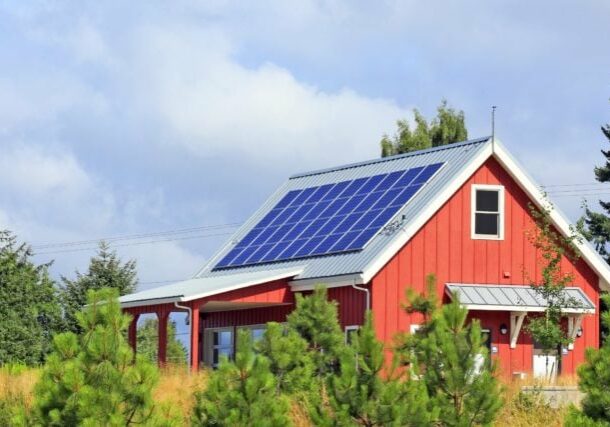July 25, 2024
The Promise and Pitfalls of Fossil Power Plant Hybridization with Energy Storage
By Abbe Ramanan
CEG recently submitted comments in response to the Environmental Protection Agency (EPA)’s greenhouse gas emissions rules for existing peaking fossil power plants (also known as peakers). Our comments recommended that battery storage be added as a Best System of Emissions Reduction (BSER) for peakers. While this recommendation makes sense within the regulatory confines the EPA must operate, fossil fuel power plants paired with battery storage – also known as hybridized power plants – can cause more harm than good, particularly if hybridization is used to prolong the use of polluting peaker plants.
How battery storage can reduce emissions.
Hybridized plants operate on similar principles to hybrid cars to reduce emissions. A battery storage system is paired with a gas turbine. The battery can turn on immediately, allowing the peaker plant to provide power at a moment’s notice. If the plant needs to operate for longer than the battery can cover, the gas turbine can kick in. Most 2-8 hour lithium ion batteries can cover 50 percent of times the peaker plant needs restart, which is when it emits the highest levels of pollution, thus reducing emissions by 60 percent.
Importantly for EPA regulations, adding batteries to existing power plants falls within the legal parameters established by the Supreme Court through West Virginia v. EPA, which invalidated the Obama administration’s Clean Power Plan. Batteries can fully replace many peakers, as is the case in New York City, where the New York Power Authority has announced it will fully replace its peaker fleet with battery storage by 2028. However, West Virginia v. EPA limits the Agency’s ability to set mandates with impacts outside the fence line of a power plant. Requiring fossil peakers to be completely replaced with non-combustion alternatives like battery storage, renewable generation, demand response programs, and virtual power plants, while entirely feasible and more effective at curtailing harmful emissions, would likely not standup to legal challenges, particularly in the wake of the recent Supreme Court decision overturning Chevron deference.
Hybridization pitfalls
While CEG supports including batteries as a BSER in the context of EPA’s power plant regulations, it should be noted that existing examples of hybridized power plants often fall short when it comes to emissions reduction. According to data from the US Energy Information Administration (EIA), at least 13 fossil fuel and battery storage power plant hybrids have been in operation between 2019 and 2022, although this number was down to 8 as of 2023. However, an analysis of generation and emissions data from these existing hybrids reveals that hybridization is not particularly effective at reducing emissions absent strong regulation or market incentives to do so. On average between 2019 and 2023, 35 percent of hybrids reported zero generation from the paired battery storage system.

Unsurprisingly, plants that reported zero battery usage also reported emissions at similar levels to before the battery was installed. A review of EIA emissions data from two California hybrids reporting zero battery generation, the Grapeland Generating Station, which installed a battery in 2016, and the El Centro Generating Station, which installed a battery in 2017, found carbon (CO2) and nitrogen-oxide (NOx) emissions were not drastically reduced following installation, and in some cases were higher than in prior years. Southern California Edison (SCE), the operator of the Grapeland peaker, stated that the primary goal of installing the batteries was to use them as spinning reserves. Spinning reserves refer to additional energy that is synchronized to the same frequency as energy already on the grid, thus making it able to be called upon at a moment’s notice. Typically, spinning reserves are generated by running fossil turbines at minimum loads even when not needed, creating additional emissions. Using batteries for spinning reserve could thus reduce emissions, since energy from batteries can be online and synced to the grid without any emissions.
However, this approach is unlikely to achieve emissions reductions at the plant level, as the battery is not used to reduce the overall runtime of the fossil turbine. A 2018 study by Gridwell Consulting examining the use of hybridized fossil resources for ancillary services like spinning reserve in California found that emissions reductions using this approach only come with fleet-wide re-dispatch, as hybrid resources take on services like providing spinning reserves, allowing other fossil resources to shut down or run more efficiently. Plant level emissions reductions would only occur if the plant’s battery were large enough and configured to respond to most peak demand scenarios.
Avoiding hybridization greenwashing
The Grapeland system has a 10 MW/4.3 MWh lithium-ion battery paired with a 50 MW turbine. While this sizing might make sense for battery systems intended to be used for spinning reserve, like the Grapeland battery, it would need to be significantly larger to handle most peaking use cases. For example, a recent project to replace the 20 MW Arthur Kill peaker plant in New York City with battery storage is building a 15 MW/60 MWh distribution-level battery storage facility. While the goal of hybridization is typically not to fully replace the fossil turbine, it is unlikely that plant-level emissions reductions will be seen unless the battery is large enough and configured to handle most peak demand scenarios.
Without this intentionality, hybridizing power plants could be used as another greenwashing tactic to delay retirement of existing fossil fuel assets or justify building new ones. One such example is already playing out in New Jersey, where a natural gas power plant proposed in one of the state’s hardest hit environmental justice communities is moving forward despite strong protests from community advocates. The state’s Department of Environmental Protection justified the decision in part by stating that the plant will be required to install 5 MW of solar panels and 5 MW of battery storage to reduce emissions. The plant will be running three 24 MW gas powered turbines, making it unlikely the solar and storage will be used to handle the primary use cases for the plant, thus limiting any likelihood of meaningful emissions reduction.
The value of batteries as a BSER
To address the existing issues with hybridization, the EPA will need to require that the batteries installed as add-on emissions controls are large enough to handle most peak demand scenarios in which the plant would be called upon. Batteries should also be required to charge from zero-emission generation sources, or at a minimum, from the grid when it is cleanest, rather than the on-site fossil unit. These requirements, combined with the widescale adoption of battery add-ons to fossil fuel plants and subsequent fleetwide re-dispatch it would precipitate, could lead to significant emissions reductions and ratepayer savings. The Gridwell study found that for California alone, each hybrid resource addition could reduce CO2 emissions by 30,000 tons a year and reduce ratepayer costs by a net present value of over $26.4 million through 2030.
While the benefits of hybridization could be substantial, it is important to note that fully replacing polluting fossil peaker plants with non-combustion alternatives such as battery storage, demand response and virtual power plants will always be the better option for reducing emissions and costs. The localized pollution and subsequent health impacts caused by fossil peakers is well documented, and as lithium-ion and longer duration storage technology improves, fossil peakers are quickly becoming obsolete. However, within the limits set by West Virginia v. EPA, including batteries as a BSER could maximize the benefits of fossil plant hybridization in the near term and establish a glidepath toward full decarbonization.














